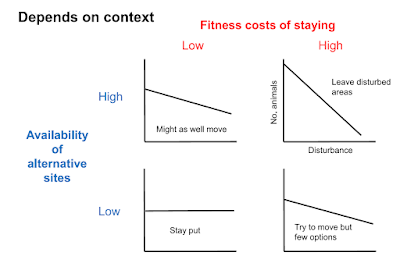Prior to the Christmas break, I had met with two potential supervisors who already had two fantastic projects but after lots of thinking about them, I decided they weren't the right project for me. One of the projects involved lots of field work, visiting study sites that weren't easily accessible - but I can't drive! Another project was focussed on looking at functional traits in insects, but there wouldn't be much field work involved - and as my PhD (starting next year - fingers crossed for funding!) will be focussed on studying insect specimens in a museum, I really wanted to have some field work experience. Also, it would perhaps be good to have some experience working on a different taxa - like birds!
Having thought a bit more and talked to my friends, I really wanted to do a project in behavioural ecology and on birds. So I approached my supervisor (Prof. Jenny Gill), who is an amazing behavioural ecologist (and person!), to ask if she had any projects she was offering. She wasn't offering any projects but I could come up with ideas I was interested in and then go forward with that! So I had a think over the Christmas break and earlier this week I met up with Jenny to discuss ideas for my project...
Being me, who constantly gets excited and fascinated by everything, I managed to narrow my interests into three possible ideas.
Urban Noise and Reproductive Success
So in the literature, birds are proposed to have lower fitness in urban noisy areas due to many factors, one of which is lower reproductive success. Lower reproductive success could be the result of multiple things, but I am interested in how urban noise might interfere with parent-offspring communication.
To solicit food from their parents, chicks give begging calls as a signal of their hunger. So perhaps it is that the chicks may not hear their parents' arrival at the nest amidst the noise and not give begging calls to solicit food. Or perhaps they call even when their parents are not at the nest, thus wasting energy. Or it could be that the frequency of the urban noise is the same as that of the begging calls, and thus parents are unable to discriminate the begging calls. Or maybe the begging calls are just too quiet amidst the noise, so their parents cannot even hear them calling. These are just some of the possible reasons why lower reproductive success may arise from interference of parent-offspring communication - and I want to investigate this more!
Habitat Disturbance and Behavioural Response
So last term Jenny was giving a lecture in my Evidence-based Global Conservation module and she showed us this figure, which was from a paper of hers (Gill et al., 2001, Biological Conservation):
Note the similarity between the top left and the bottom right graphs. This idea fascinated me and really suggests that we are probably putting a lot of our conservation resources in the wrong place by just solely focussing on species that change their distribution as a result of human disturbance. It is important to distinguish the behavioural response of those with low costs of staying in a highly disturbed site and high number of alternative sites (i.e. best scenario - top left) and those that have high costs but low number of alternative sites (i.e. worst scenario, they just don't have anywhere to go - bottom right).
So I went to look for papers that had studied this following this publication, and surprisingly, apart from Colin Beales' studies on the turnstone, there wasn't much more looking into this... thus, I am interested in studying this further.
Payoffs for strategies in partial migrants with climate change
Ever since my undergraduate lectures with the amazing Prof. Nick Davies, I have been fascinated by understanding the payoffs for strategies that individuals adopt. So when I was reading David Lack's paper (1968, Oikos), I got very excited. One of his examples was describing changes in migratory behaviour of the British Lesser Black-backed Gulls. Prior to 1940s, these gulls were mainly migratory, but since then, the majority have become winter residents. And he suggested it was because: i) the food availability in Britain all year round had increased due to the presence of dumpsters - thus chances of survival had increased for residents; ii) whereas the chances of survival had remained the same for the migrants.
So for these partial migrants, the relative payoffs of migration and permanent residence strategies are similar and are dependent on competition. With environmental change, the proportion of migrants within the population may change. How will the proportion of migrants change with proposed climate change effects? If there are shifts in the strategies adopted by individuals (e.g. the majority switch to becoming residents), are our conservation action plans still fit for purpose, or do they need to change? Thus I was excited by this final idea - it is the most ambitious of the three ideas and least likely to happen because I only have a four month field season for this project...
What's next?
So we discussed ways in which each idea could be studied, and the constraints we have in terms of time (a 4-month long field season is incredibly short!) and other factors. All the ideas are possible, and now I have the tough job of picking one!

No comments:
Post a Comment